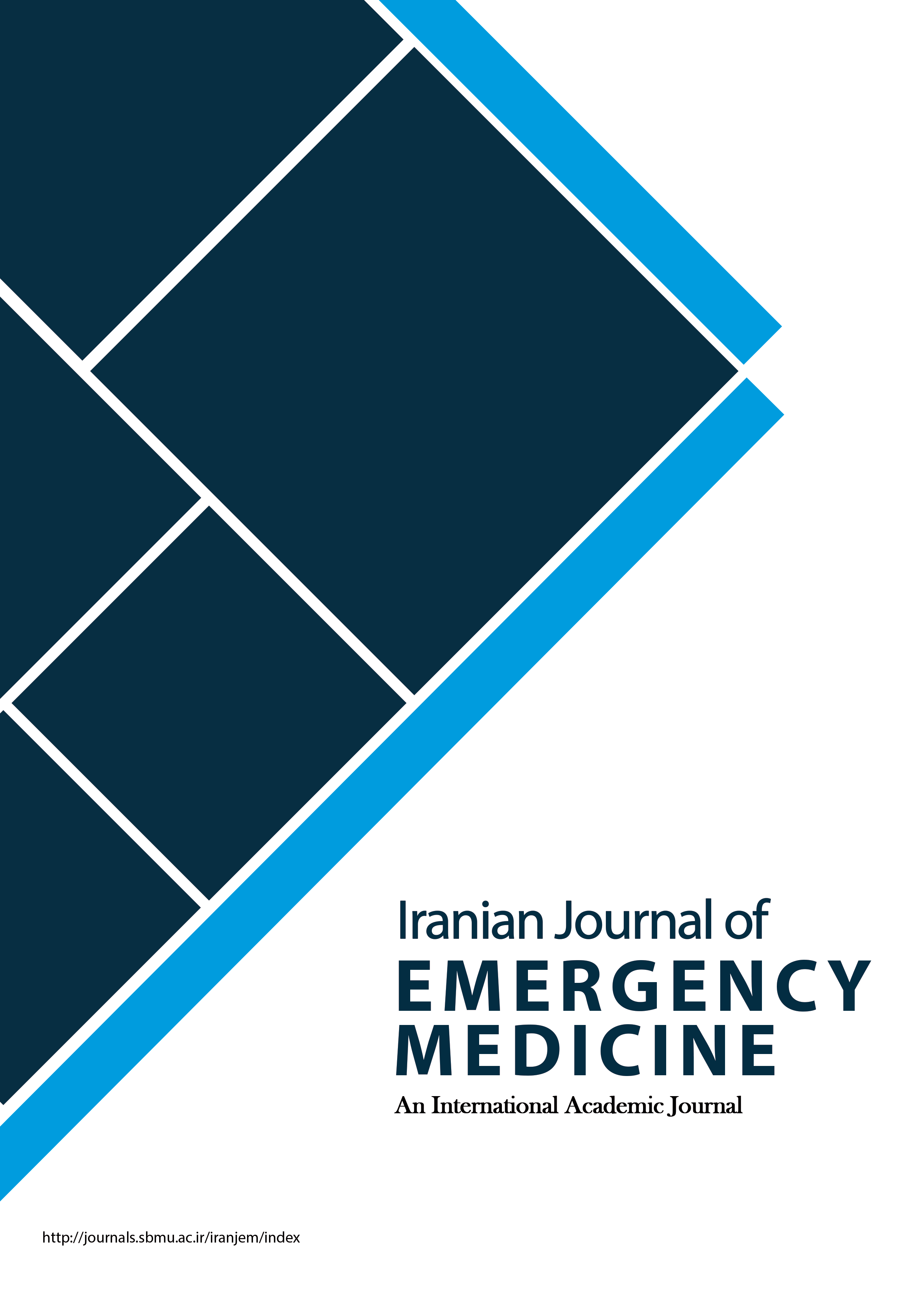Epidemiologic Study of Animal Bite in Rasht County, Guilan Province, Iran’s North, 2012
Iranian Journal of Emergency Medicine,
Vol. 1 No. 1 (2014),
6 August 2014,
Page 11-15
https://doi.org/10.22037/ijem.v1i1.6846
Introduction: Animal bite because of following killing infections such as Rabies is considered as one of the health problem issues in Iran and other countries. Although extensive progressions have been achieved in prevention and treatment areas, spread of animal bite still has an increasing rate and large amount of costs have been annually spent to provide vaccine and anti-bodies. This study was done with the aim of epidemiologic evaluation of animal bite in Rasht county, Guilan province, Iran, 2012. Methods: In a prospective cross- sectional study, the related data of whole animal bite cases were gathered in terms of demographic information (age, sex, and occupation), animal species, animal dependency (wild, domesticated, unknown), habitant, part of body bitten, season, and type of wound. Results: Totally 1014 cases (72.5%) of animal bite were reported. The mean age of studied population was 33.63±17.81 years. The most cases of animal bite were related to dog (79.2%), domestic animals (88.3%), village habitants (61.3%), hand (55.2%), spring season (29.8%), and superficial type of wound (64.3%). The patients bitten from the face area were younger than those injured in other sites (p=0.001). The bitten individuals by other animals were younger than people bitten by cat or dog (p=0.002). Conclusion: The results of the present study showed that the incidence of animal bite was higher in spring season, by domestic dogs, among men in rural area, and as superficial wounds in the 20-29 age group. The animal bite has a relation with gender, age, and habitant. Animal bite has been yet considered as one of the public health problems and training activities could have a significant role to control such cases.



